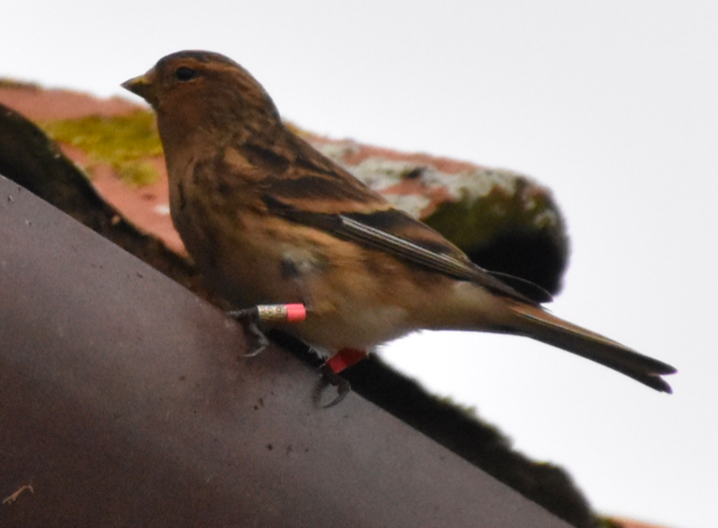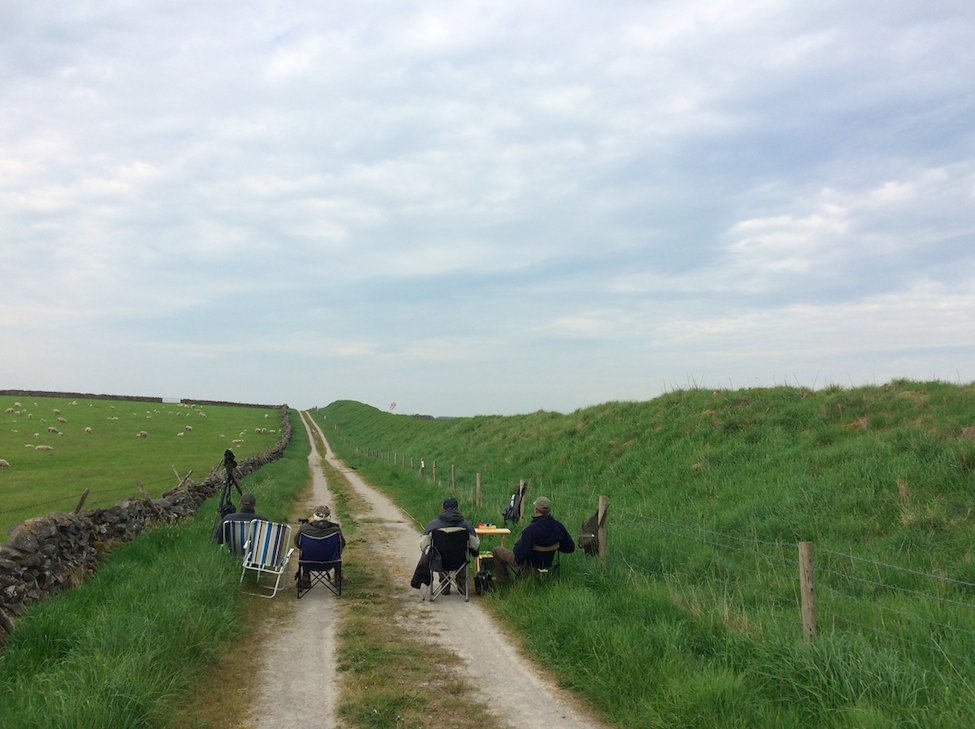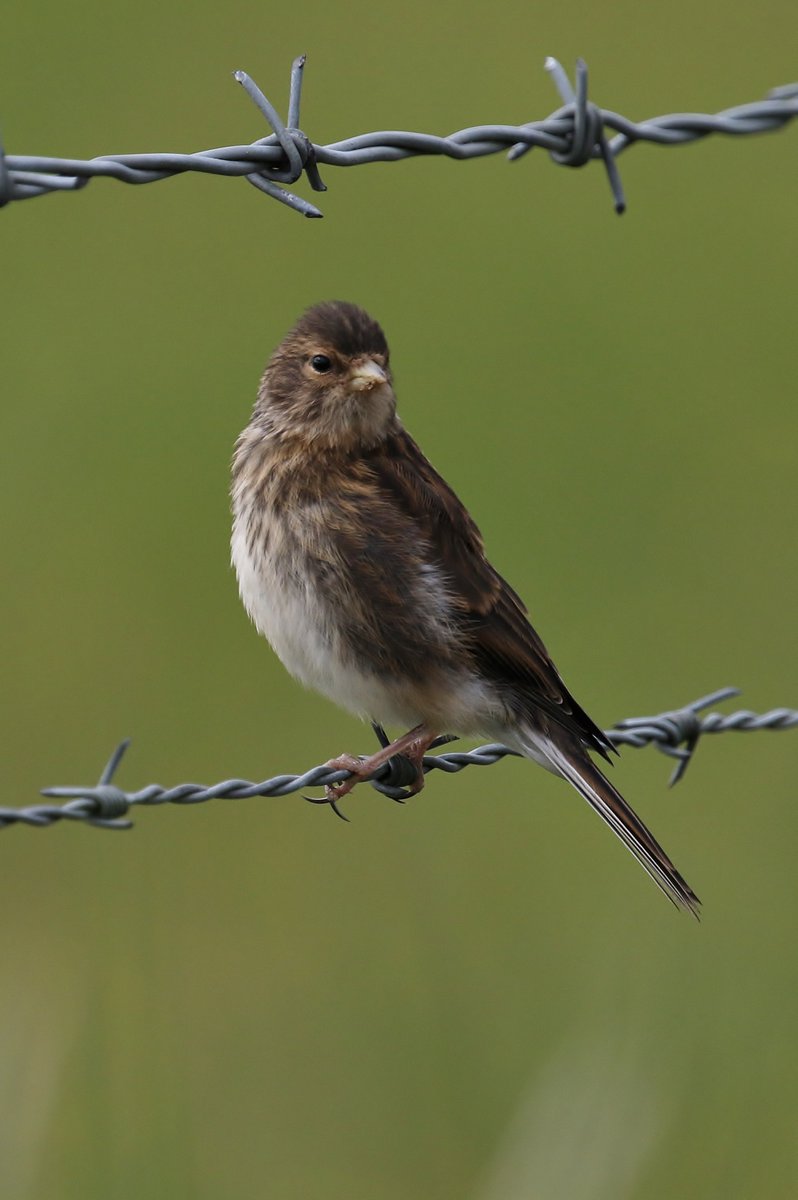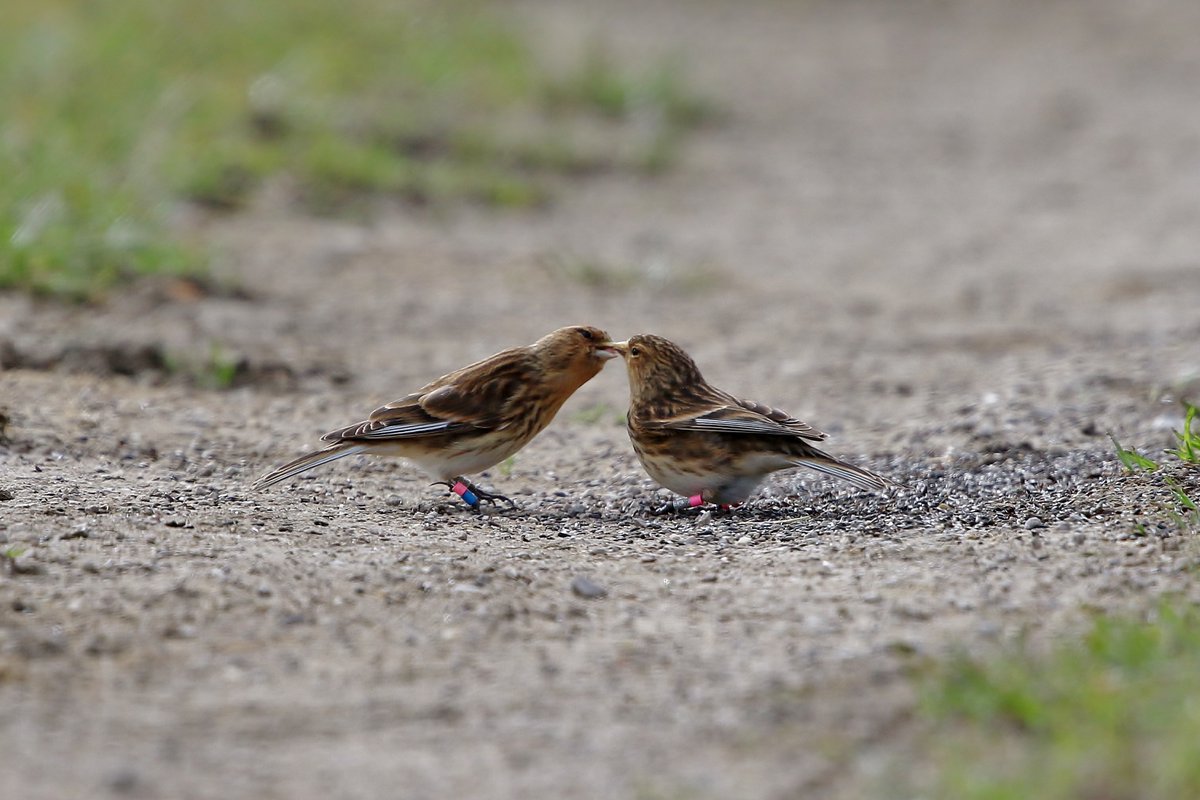Yesterday, @Kaulofthewilduk reported our first winter resighting of 2020-21, and she& #39;s a (somehow nameless) bird we know very well. So much so that her on-going life history deserves a (à la @Tetzoo) mega-thread.
Before we knew she was a she, she was ringed as a juvenile on the 13th Sept 2016 near Dove Holes (DH), Derbyshire, a weird and apparently isolated breeding outpost.
The 76th Twite ringed here.
She left the breeding site ~6th October and was reported at Thornham ~11th Dec 16.
The 76th Twite ringed here.
She left the breeding site ~6th October and was reported at Thornham ~11th Dec 16.
Then, arriving back in April 2017, she bred in Derbyshire, with N/M C/O (a bright and territorial male), which by process of elimination meant that she was in fact a she.
Having fledged young, she left for Thornham around the 20th of October, and returned to DH in March 2018.
Having fledged young, she left for Thornham around the 20th of October, and returned to DH in March 2018.
What is clear from our data is that the passage period is short, at least between the Pennine pop. and the SE coast - We have several birds which have apparently managed this over a day or two (maybe suggesting some degree of nocturnal migration?).
She arrived back at a good time. We had just managed to win some funding from @CEMEX_UK and @Natures_Voice to radio tag birds over the breeding season.
Foraging potential might be a big constraint to survival, so this is important data!
Foraging potential might be a big constraint to survival, so this is important data!
Furthermore, & #39;our& #39; Twite here breed on steep and inaccessible cliffs, and so nesting data is a big gap in our study. Radio-tagging would bridge that gap to some extent, but possibly also reveal where (if anywhere new) Twite were feeding when we aren& #39;t watching.
Briefly on watching, we have some very dedicated Twite volunteers (we& #39;re all volunteers). One of which is averaging 280 days a year (!!) reading colour rings at a feeding station.
The radio-tagging project taught us that she and most others were probably nesting inside the quarry, and probably feeding close by - probably at the feeding station and surrounding road verges.
Interestingly, (and contrary to the above) C/M R/C may have foraged or even nested (with P/M C/B) further away in 2019, returning only sporadically, and often with fresh faced fledglings, to the feeding stations.
Although we haven& #39;t managed to recapture her again, her colour rings mean that we can collect data on her movements and survival with only binoculars.
Such day-to-day survival data from this site recently informed a project at @imperialcollege - results soon - but,
Such day-to-day survival data from this site recently informed a project at @imperialcollege - results soon - but,
It looks as though juvenile survival might be particularly low here (and maybe even elsewhere in England). It& #39;s then important that we can account for what happens to our colour-ringed juveniles over the course of the year - is the pressure at home or away?
We know that she has successfully fledged young at DH annually since she was ringed, and that in winter, she spends at least some of her time at Thornham harbour.
In 2020, she left DH on the 14th October and was re-sighted yesterday by @Kaulofthewilduk.
In 2020, she left DH on the 14th October and was re-sighted yesterday by @Kaulofthewilduk.
As I hope is apparent here, reporting colour-rings is a vital tool in conservation research.
These data are being used (right now!) not just to model survival, but also to site winter crops in England, and to identify the limits and behaviours of breeding groups.
These data are being used (right now!) not just to model survival, but also to site winter crops in England, and to identify the limits and behaviours of breeding groups.
If you& #39;re out birdwatching and you find a colour-marked bird, it is (in my opinion) your solum duty as a conservationist, to track down the project ( http://www.cr-birding.org/ )">https://www.cr-birding.org/">... and report your observation. Or, directly to the @_BTO ( https://www.bto.org/how-you-can-help/report-something).">https://www.bto.org/how-you-c...
I have summarised our Twite work as best I can in the upcoming BTO LifeCycle (summer 2020).
As ever, thank you to everybody who makes this project possible. We& #39;re all very proud of it.
(all photos P Welch, appart from this one, the awesome @sewellspotnjot)
As ever, thank you to everybody who makes this project possible. We& #39;re all very proud of it.
(all photos P Welch, appart from this one, the awesome @sewellspotnjot)

 Read on Twitter
Read on Twitter












